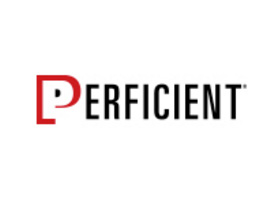Integrating to any large system can pose a number of challenges. Over time, we’ve had to integrate to SAP, Siebel, Peoplesoft, and a variety of other systems. One thing we’ve learned is that it’s always possible but also brings with it a number of challenges. Today I wanted to focus on integration to Peoplesoft. Part […]
Posts Tagged ‘Technical’
Initial Impressions of IBM Portal Mobile Experience
IBM released the new Portal Mobile Experience theme a couple of weeks ago (see Jonathan Distad’s post). I decided to install this new theme to see what a Portal Mobile Experience is like. In the first screen shot, you see the standard Portal Administration page from a desktop browser. There is a navigator on the […]
Maven and WebSphere Web Applications (Part 2)
The parent project of the multiple module web application uses the uses the <packaging>pom</packaging> tag and several <module> tags to indicate that it is controlling the build order of several artifacts. The control is provided through the reactor plugin. The file structure that I use is: /ear /ear/pom.xml /web /web/pom.xml .classpath .project pom.xml The ear […]
Maven and WebSphere Web Applications (Part 1)
Web Applications are WAR files that include java code and JSP files with a web.xml deployment descriptor that are intended to implement dynamic web functionality (as opposed to static web functionality which uses HTML files). A portal team typically uses this packaging technique for the following artifacts: Portal themes and skins web services iWidgets WebSphere […]
The Portal URI Resolution Service
WebSphere Portal 6.0.1 introduced a capability called the URI resolution service or POC servlet or the Resolver Framework depending on where you see it mentioned. The DeveloperWorks article called Accessing portal content with custom URLs is the most recent and informative post I have found describing this service. This service was created to allow non-portal sites in your […]
Release Management for WebSphere Portal
Releasing your portal project to a brand new environment can be a fairly large challenge. I maintain the reason for the challenge is that there are so many tools and procedures required for this process. It is difficult to find somebody on your team that has deep administrative experience coupled with a development background so […]
WebSphere Portal and Maven (Part 6)
You use a parent pom.xml file that each portlet project inherits from to encapsulate your dependencies and maven plugin bindings. This keeps all this code out of sight from your portlet project. This first code posting shows the plugin definition under a pluginManagement section. This section is used to create any dependencies used by the […]
New Whitepaper on Using TDI for IBM Connections
IBM Connections uses a tool called Tivoli Directory Integrator to push and pull profile information between Connections and a variety of different LDAP’s and systems (Peoplesoft HR for example). It’s a powerful tool that can get a little complicated. IBM just published a whitepaper on their developer worksweb site titled Understanding IBM Tivoli Directory Integrator […]
WebSphere Portal and Maven (Part 5)
I recommend using a maven plugin to package your logic. The reason is that the ANT antcall and XSLT tasks require file inputs (and do not support URIs). When you package these file resources into a jar (as you do with a plugin) then you can extract them to the correct relative filesystem locations as […]
WebSphere Portal and Maven (Part 4)
So far you have a compiled portlet and an XSLT capable of producing an xmlaccess request input file based on your specific portlet.xml file. Next you create an ANT script that is capable of submitting your request to the portal server. The script presented below diverges to distinguish between local portlet deployments (when you are […]
When to use JSR 286 vs JSR 168 for portlets
Some confusion exists in the portlet development community, because many vendors tout their compliance with JSR 168 standards and less rarely talk about JSR 286 compatibility. I think this is mostly due to the fact that prior to JSR 168 becoming mainstream, the standards were loose and vendors built to their own specifications. So becoming […]
When to use JSF in Portlets and when to not?
A colleague presented me with this question today: Under what conditions does it make sense to use JSF portlets and when doesn’t it? This is a good question and can be applied to several frameworks, such as Struts and Spring MVC. Now before I answer, let me give you some of my background. I’ve been […]
